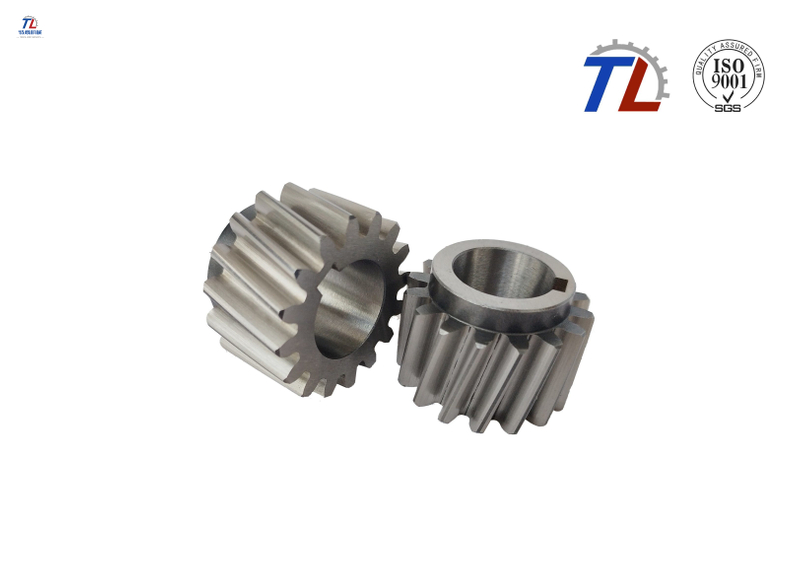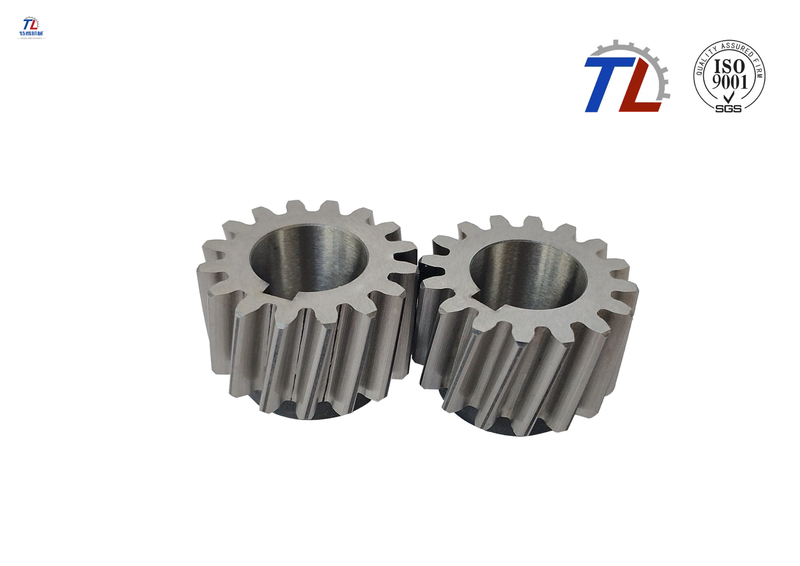- All
- Product Name
- Product Keyword
- Product Model
- Product Summary
- Product Description
- Multi Field Search
Views: 0 Author: Site Editor Publish Time: 2025-07-12 Origin: Site









Have you ever wondered how machines transmit power between shafts at varying angles? The answer lies in bevel gears. These essential components play a crucial role in mechanical systems by changing the direction of rotational motion between two intersecting shafts. Whether it's in automotive gear systems, industrial machinery, or power transmission devices, bevel gears ensure efficient power transfer with minimal friction and wear.
So, what exactly are bevel gears? These gears are conical-shaped mechanical components that mesh with other gears to transmit power at right angles or other angles. But that's just the beginning. We'll also explore different bevel gear types, such as spur gears, helical gears, and the specialized bevel gears themselves, including spiral and hypoid variations.

Bevel gears are distinct mechanical components primarily designed to transmit power between two shafts that are set at an angle to each other. The geometry of these gears includes a conical shape, which enables them to operate effectively in different configurations. Unlike other types of gears that transmit power along parallel shafts (such as spur gears), bevel gears are used when the shafts intersect at angles, commonly 90 degrees. However, they can also handle other angles, providing flexibility in various mechanical systems.
The teeth of bevel gears are cut in such a way that they follow the surface of a cone. The intersecting point of the cone, where the teeth come together, ensures that power is efficiently transferred without significant loss. The unique tooth design also allows bevel gears to handle both radial and thrust loads, making them a versatile choice in mechanical engineering.
Bevel gears can be manufactured with several variations to suit specific operational needs, offering different advantages in terms of noise reduction, load capacity, and durability. These gears are commonly used in automotive applications (e.g., differentials), industrial machinery (e.g., conveyor systems), and in various power transmission applications.
Bevel gears are classified based on several key features, including their tooth design and the angle at which the shafts intersect. The main types of bevel gears are:
Straight bevel gears are the most straightforward type of bevel gear. These gears feature straight teeth that extend radially from the apex of the conical shape. Straight bevel gears are easy to manufacture, making them cost-effective. However, they tend to generate more noise and vibration compared to other types due to the nature of their tooth engagement.
Straight bevel gears are often used in low-speed applications where noise and vibration are less of a concern. Common uses include machinery such as presses, lathes, and some automotive differential systems. Despite their simplicity, straight bevel gears are reliable when used within their operational limits.
Spiral bevel gears are more advanced than straight bevel gears. These gears feature teeth that are curved and angled, resulting in a smooth, gradual engagement as the gears mesh. The spiral tooth design not only reduces noise but also improves efficiency, making spiral bevel gears ideal for high-speed applications.
Spiral bevel gears are commonly used in automotive rear axles, industrial drives, and helicopter transmissions, where quieter operation and increased load capacity are crucial. The increased tooth contact area of spiral bevel gears allows for higher torque transmission, which is why they are preferred for applications that require greater strength and durability.
Zerol bevel gears combine the characteristics of both straight and spiral bevel gears. They have curved teeth like spiral bevel gears, but the spiral angle is zero, meaning the teeth are aligned with the axis of the gear. This unique design provides smoother engagement compared to straight bevel gears, while also reducing thrust loads.
Zerol bevel gears are widely used in applications requiring both smooth operation and flexibility in assembly. These gears can replace straight bevel gears in some cases without requiring significant modifications, offering a quieter and more efficient alternative.
Hypoid bevel gears are a type of bevel gear that differs from the standard bevel gears in that their axes do not intersect. This "offset" design allows hypoid gears to use larger diameter pinions, increasing the available torque and offering more gear ratio options.
Due to the offset design, hypoid bevel gears are commonly used in automotive differentials and heavy machinery applications, where high torque and compactness are needed. However, the offset design results in more sliding contact between the gear teeth, leading to higher friction and the need for more specialized lubrication.

Bevel gears are designed to change the direction of rotational motion between two intersecting shafts, typically at a 90-degree angle. The teeth of the bevel gear mesh with the teeth of the mating gear, and the rotation is transmitted through the gears.
In terms of operation, the driving gear (the gear that supplies power) engages the driven gear, transferring torque and changing the direction of motion. Depending on the gear ratio, the speed of the driven gear may increase or decrease relative to the driving gear.
In most cases, bevel gears work in pairs, where the two gears are manufactured to match precisely in terms of tooth count and geometry. The correct meshing of the gears is crucial for achieving efficient power transmission and minimizing wear and tear.
Bevel gears are used in a wide variety of applications, where the need to transmit power between shafts at different angles is required. Below are some of the most common industries and applications where bevel gears play a crucial role:
In the automotive industry, bevel gears are often used in differential systems. A differential is an essential part of a vehicle’s drivetrain, allowing the wheels to rotate at different speeds while maintaining traction. Bevel gears in a differential help distribute torque evenly to the wheels while adjusting for changes in speed during turns.
Bevel gears are also used in various types of industrial machinery, such as conveyor systems, lathes, and presses. These gears help change the direction of power transmission, allowing machinery to operate efficiently and reliably. The ability to handle both radial and thrust loads makes bevel gears suitable for high-demand industrial applications.
In aerospace, bevel gears are crucial components in the power transmission systems of helicopters and airplanes. These gears are used to transmit power to various parts of the aircraft, including the rotor systems and auxiliary components.
Bevel gears are commonly used in marine applications, especially in stern drive systems. These gears help transmit power from the engine to the propeller, enabling efficient movement and control of the vessel.
In various power transmission systems, bevel gears are used to adjust the direction and speed of power being transferred. These gears ensure that power is delivered efficiently across systems, including pumps, generators, and wind turbines.
Bevel gears are a critical component in mechanical systems that require power transmission between shafts at different angles. Their unique conical design allows them to handle both radial and thrust loads, making them ideal for a wide range of applications, including automotive, industrial machinery, aerospace, and marine systems. By selecting the right type of bevel gear—whether it’s straight, spiral, zerol, or hypoid—you can ensure that your mechanical system operates smoothly, efficiently, and with minimal wear.
Guangzhou Telin Machinery Parts Co. offers high-quality bevel gears designed to meet the needs of various industries. Whether you need bevel gears for automotive, industrial, or aerospace applications, Telin’s products are engineered to deliver excellent performance, durability, and reliability.
A: Bevel gears are mainly used to transmit power between shafts at an angle, typically 90 degrees. They are widely used in automotive differentials, industrial machinery, and aerospace systems.
A: Spiral bevel gears offer smoother tooth engagement, reduced noise, and higher efficiency compared to straight bevel gears. They are ideal for high-speed applications and offer better load-carrying capacity.
A: Yes, bevel gears are designed to handle both radial and thrust loads, making them suitable for demanding applications where high torque is required.
A: Hypoid bevel gears are preferred in automotive differentials due to their ability to transmit higher torque and provide more gear ratio options. Their offset design allows for larger pinions, which is beneficial for compact designs.
A: To ensure bevel gears operate efficiently, proper lubrication is essential to reduce friction. Additionally, regular maintenance to check for tooth wear, misalignment, and backlash is crucial for optimal performance.